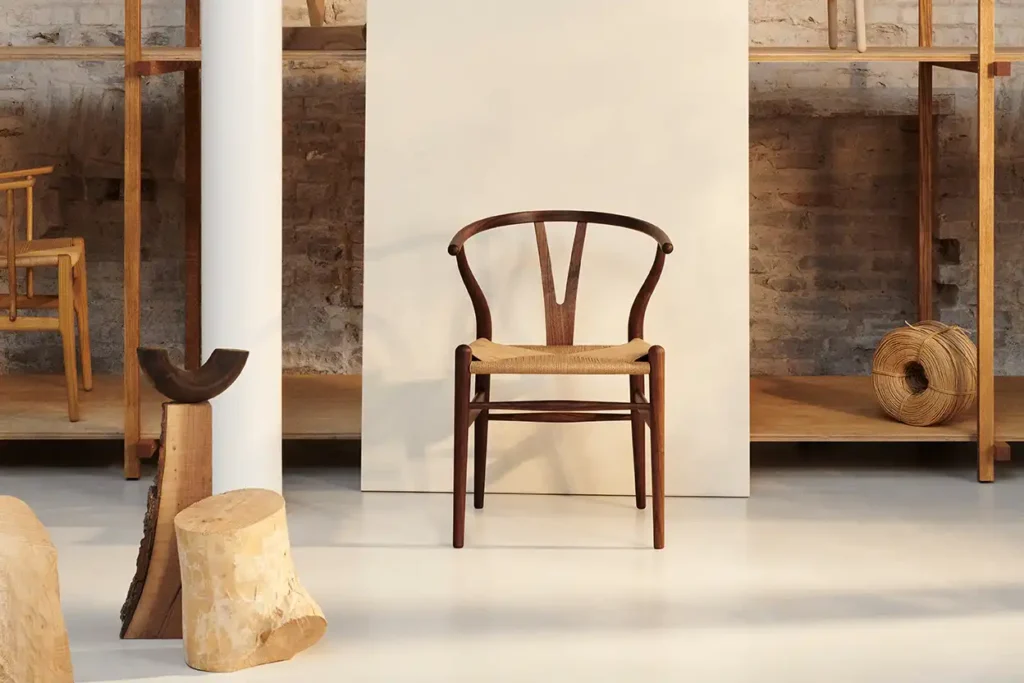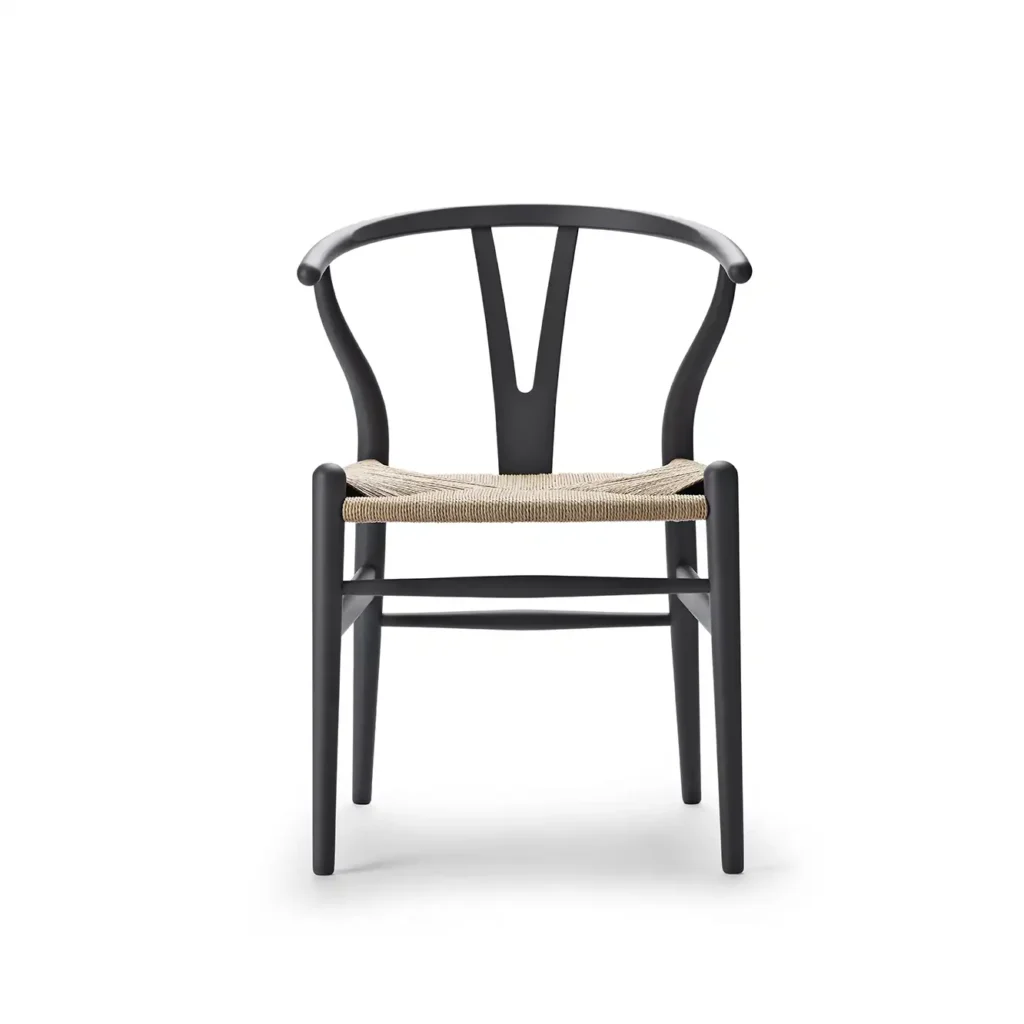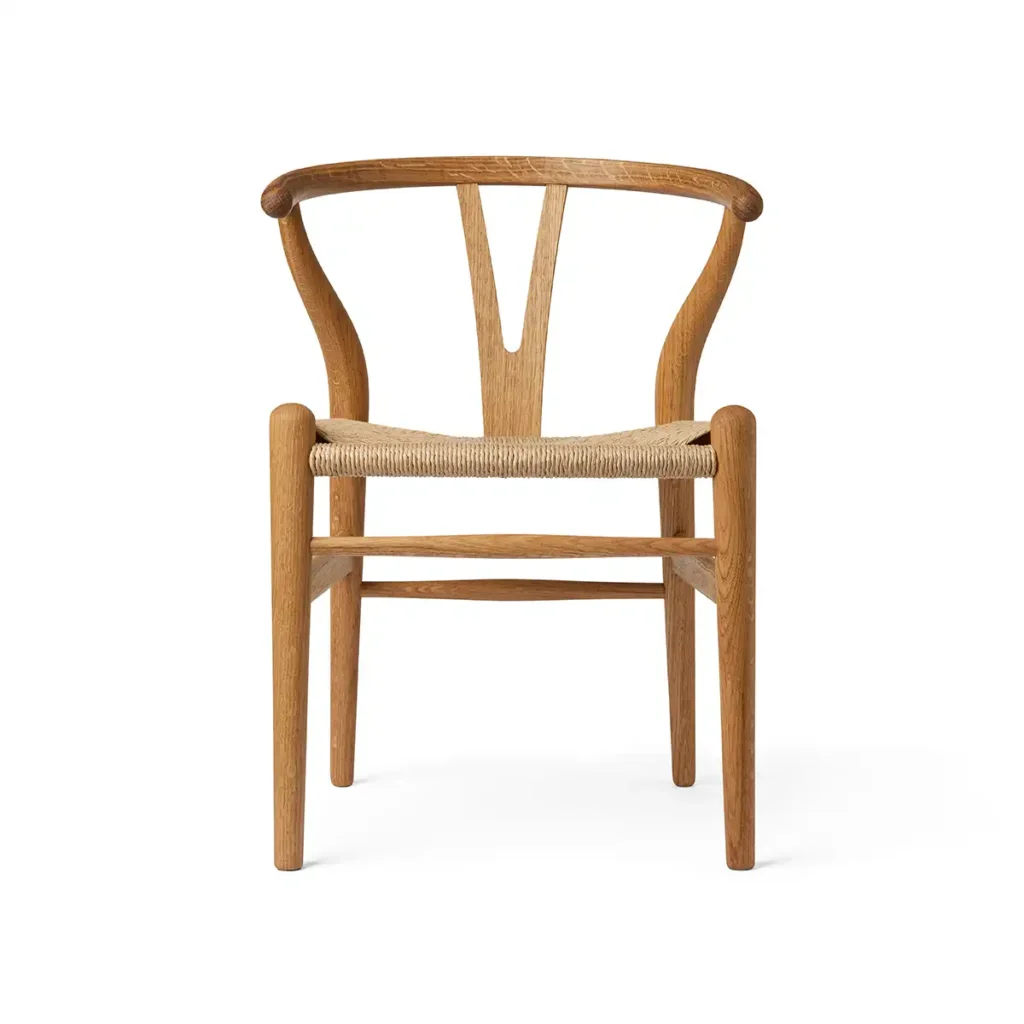The Wishbone Chair
Hans Wegner’s Danish Design Icon

It was while walking through the Copenhagen Cabinetmakers’ Guild exhibition in 1947 that Holger Hansen, son of cabinetmaker Carl Hansen, noticed a group of chairs by the young Danish cabinetmaker and architect Hans Wegner. Wegner had been inspired by portraits of Danish merchants seated in Chinese Ming-era chairs and designed the five chairs on view at the expo.
Origins of the Wishbone Chair
The Ming Dynasty (1368–1644) is considered the golden age of Chinese furniture, known for elegance, carved wood construction without metal fastenings, and functional design. Inspired by these traditions, Wegner created five designs that Carl Hansen & Søn released in 1950 (CH22, CH23, CH24, CH25, CH26). The CH24 became the most popular of the group, soon earning its famous nickname: the Wishbone Chair.
Craftsmanship and Materials
Wegner combined the back and armrest into a single steam-bent piece. To provide stability and comfort, he developed the Y-shaped back that gives the Wishbone Chair its name. The continuous horizon of lines, known in China as yuanhun, symbolizes power and good fortune.
- Each chair is composed of 14 separate components
- More than 100 steps are required before assembly
- The seat takes about an hour of skilled weaving
- Approximately 395 feet of paper cord are used for each seat
Wegner originally chose paper cord as a practical postwar substitute when materials were scarce, but soon came to value its strength, beauty, and harmony with the wooden frame.
How to Spot an Authentic Wishbone Chair
With so many replicas on the market, it’s important to know the details of an authentic piece. Look for:
- Back/armrest crafted from a single piece of wood (no seams)
- Smooth, tapered legs
- A tightly and evenly woven paper cord seat
- A Carl Hansen & Søn logo and Hans Wegner’s signature
- A unique serial number plate under the seat
“Each Wishbone Chair seat requires 395 feet of paper cord and an hour of skilled weaving.”
Legacy and Collectibility
Wegner designed over 500 chairs in his lifetime, but the Wishbone Chair has never ceased production since 1950. Today, it remains one of the most recognizable and beloved Danish modern designs, priced between $675 and $2,000 depending on finish.
Authentic examples are featured in the permanent collections of the Metropolitan Museum of Art and the Vitra Design Museum, cementing the Wishbone Chair’s place as both a functional seat and a work of art.
Special thanks to Sarah Prak for bringing the history of this chair to our attention.


